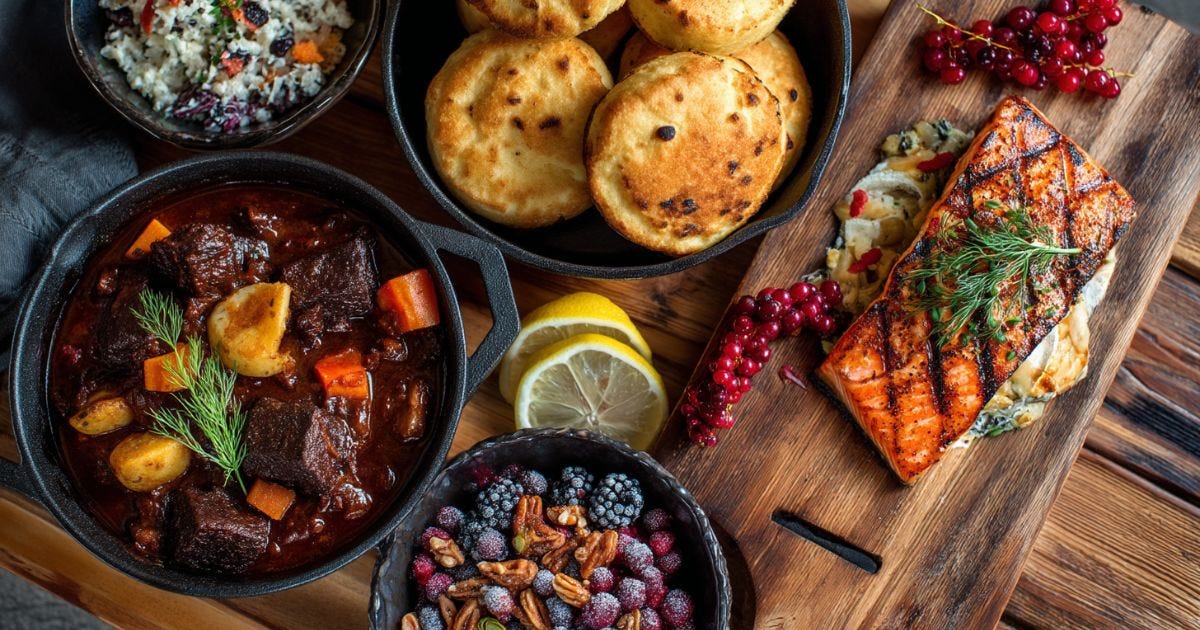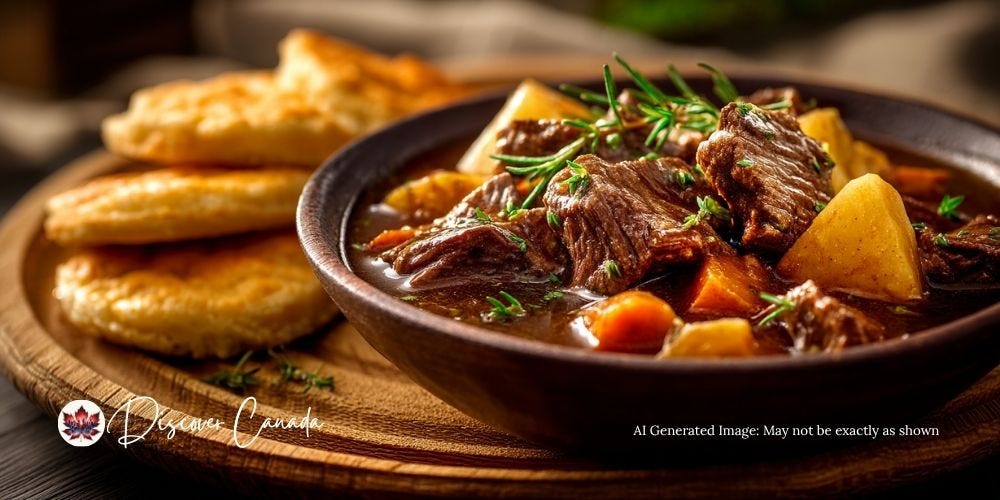You Won’t Believe These Flavors of Indigenous Canada
From fire-roasted bison to golden bannock, taste Canada’s origins.
A Taste of Indigenous Canada: Food, Culture, and Recipes
Introduction 🌾
There’s something timeless about Indigenous food — it’s more than meals on a plate; it’s survival, tradition, and celebration passed down through generations. Across Canada, Indigenous chefs are blending heritage with modern creativity, reviving old recipes and creating new ones that tell a story of resilience and community.
In this week’s feature, I explored seven Indigenous-owned restaurants and shared four classic recipes that define this culinary tradition. Here’s a taste — three restaurants and two recipes — to whet your appetite.
👉 Read the full article here: https://www.discovercanadainstyle.com/p/indigenous-food-canada
Key Takeaways 🍴
🌎 Indigenous food connects history, culture, and the land.
🥖 Bannock, bison, wild rice, and Arctic char are timeless staples.
👨🍳 Indigenous chefs are keeping these traditions alive in modern kitchens.
🍽️ You can bring these flavors home through simple, soulful recipes.
Salmon n’ Bannock (Vancouver, BC)
In Vancouver, you’ll find Salmon n’ Bannock, the city’s only Indigenous-owned restaurant. It’s run by Inez Cook, a proud member of the Nuxalk Nation. Her story is remarkable — she’s a survivor of the Sixties Scoop, taken from her family as a child. Through food, she found her way back to her culture.
At Salmon n’ Bannock, you can sit down to wild sockeye salmon, elk stew, or bison pot roast — each dish layered with flavor and meaning. The bannock itself is soft, golden, and unforgettable.
Menu highlights: Elk stew, bison pot roast, wild sockeye salmon with citrus glaze, smoked candied salmon.
Feast Café Bistro (Winnipeg, MB)
In Winnipeg, Chef Christa Bruneau-Guenther, a member of the Peguis First Nation, brings Indigenous comfort food to life at Feast Café Bistro.
Her goal has always been to feed both body and spirit — and when you walk in, you can feel it. The air smells like bannock just out of the oven, and every table seems to have a bowl of bison chili or a slice of bannock pizza. Feast is warm, welcoming, and authentically Manitoba.
Menu highlights: Bannock pizza with bison, roasted corn soup, bison chili, and maple bread pudding.
Tee Pee Treats Indigenous Cuisine (Edmonton, AB)
For a more casual, everyday taste of Indigenous cooking, Tee Pee Treats Indigenous Cuisine hits the spot. Run by Chef Curtis Cardinal of the Whitefish Lake First Nation, it’s all about approachable comfort food where bannock takes center stage.
Think of it as fast food with heart: bannock burgers, bannock tacos, even bannock fries — playful takes that bring tradition into daily life. Cardinal often says that bannock connects him back to his family’s kitchen, making every bite feel like home.
Menu highlights: Bannock burger with bison patty, bannock tacos, bannock fries with dip, berry crumble.
👉 See all seven Indigenous-owned restaurants across Canada →
https://www.discovercanadainstyle.com/p/indigenous-food-canada
Classic Bannock
There’s something almost magical about bannock. Simple ingredients, quick to make, yet it carries generations of memory. Imagine a campfire in the wilderness — someone mixing flour and water in a bowl, patting out rounds of dough, and cooking them over the flames until they puff and brown. Bannock was a food of survival, community, and celebration all at once.
Today, it shows up in countless forms: baked golden in the oven, pan-fried into crispy rounds, or even wrapped around a stick and roasted over open flames — a campfire tradition that still delights kids and adults alike.
Ingredients:
2 cups all-purpose flour
1 tbsp baking powder
½ tsp salt
2 tbsp butter or lard, softened
1 cup water or milk (approx.)
2–3 tbsp neutral oil (canola, vegetable, or sunflower) for pan-frying
Directions:
In a large bowl, whisk together the flour, baking powder, and salt.
Cut in the butter or lard until the mixture is crumbly.
Gradually add water or milk, stirring until a soft dough forms.
Turn onto a floured surface and knead gently 5–6 times.
For baking, preheat the oven to 400°F (200°C). Press the dough into a round about ¾ inch thick, place it on a greased baking sheet, and bake for 20–25 minutes, until golden.
For pan-frying: Heat oil in a cast-iron skillet over medium heat. Shape the dough into palm-sized rounds and fry for 2–3 minutes per side, until golden brown.
For campfire cooking: Flatten strips of dough and wrap them around clean sticks. Hold over glowing coals until lightly browned.
Serve bannock warm with butter, jam, or honey — or use it as the base for tacos or pizza.
Bison Stew
Few foods carry the weight of history quite like bison. For generations, herds sustained prairie nations, providing not just food but shelter, tools, and clothing. When those herds nearly vanished, so too did a way of life. Today, cooking with bison feels like reclaiming something sacred.
It’s leaner than beef, so it lends itself to slow simmering. Brown cubes of bison with onions, then add carrots, celery, potatoes, a little garlic, thyme, and a bay leaf. Pour in stock — and maybe a splash of red wine — and let it all cook low and slow until the meat is tender and the broth deep and rich.
Ladle it into bowls, serve with fresh bannock, and you’ve got a meal that tastes like the prairies themselves — hearty, earthy, and best shared.
👉 Find the other two recipes — wild rice pilaf and maple-glazed Arctic char — in the full article →
https://www.discovercanadainstyle.com/p/indigenous-food-canada
Closing Thoughts 🌿
Indigenous food tells a story older than Canada itself — one that’s still being written by the chefs, home cooks, and communities keeping these flavors alive.
If this little taste has made you hungry for more, you’ll love the full feature, which includes all seven restaurants and four recipes.
👉 Read it here: A Taste of Indigenous Canada →








